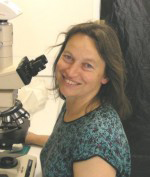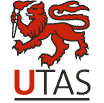

|
Position
Associate Professor
National Centre for Marine Conservation and Resource Sustainability
AMC Institute
University of Tasmania
Contact
Email: B.Nowak@utas.edu.au
Phone 03 63243814
Fax 03 63243804
http://www.utas.edu.au/
Research interests
My area of research is aquatic animal health. My research focuses on health of farmed fish, in particular interactions between host, pathogen and environment in parasitic diseases. Understanding these relationships is important for health management, improving aquaculture production and ensuring sustainable development.
Qualifications
MSc 1982 University of Agriculture, Szczecin Poland
PhD 1991 University of Sydney
DSc 2004 University of Agriculture, Szczecin Poland
Ten Most Significant Publications
1. Nowak, B.F., Goodsell, A. and Julli, M. (1995) Residues of endosulfan in carp as an indicator of exposure conditions. Ecotoxicology, 4: 363-371. (JIF:1.40, cit 6)
This publication reports development of new markers of fish exposure to organochlorine pesticide endosulfan, these markers have been since used as evidence in court cases concerning mass mortalities of fish in New South Wales and Queensland.
2. Nowak, B. and Lucas C. (1997) Diagnosis of structural changes in fish gills - can biopsy replace necropsy? Aquaculture, 159:1-10. (JIF:2.08, cit 4)
We systematically compared results from gill biopsy and necropsy investigations and concluded that it is difficult to diagnose structural changes in gills using biopsy, thus resulting in its limited application in diagnosis of gill diseases.
3. Verburg-van Kemenade, B.M.L., Nowak, B., Engelsma, M.Y. and Weyts, F.A.A. (1999) Differential effects of cortisol on apoptosis and proliferation of carp B-lymphocytes from head kidney, spleen and blood. Fish & Shellfish Immunology, 9:405-415. (JIF:2.72, cit:17)
This publication provided basis for our understanding of effects of cortisol on fish lymphocytes, in particular that the effects were much more severe for B lymphocytes originated from anterior kidney than form spleen or blood, most likely due to the larger percentage of immature B lymphocytes present in the anterior kidney.
4. Eriksen, R.S., Mackey, D.J., van Dam, R. and Nowak, B. (2001) Copper speciation and toxicity in Macquarie Harbour, Tasmania – an investigation using a copper ion selective electrode. Marine Chemistry, 74:99-113. (JIF:2.66, cit:30)
We reported a relationship between speciation of copper (as measured using copper ion selective electrode) and toxicity of copper, which explained an apparent lack of copper toxicity under some environmental conditions.
5. Bridle, A.R., Butler, R. and Nowak, B.F. (2003) Immunostimulatory CpG oligodeoxynucleotides increase resistance against amoebic gill disease in Atlantic salmon, Salmo salar L.. Journal of Fish Diseases, 26:367-371. (JIF:1.71, cit:19)
First record of a successful use of CpGs as an immunostimulant in a parasitic disease of fish. This research formed basis for our current investigation of the use of immunomodulation to control Amoebic Gill Disease in salmonids.
6. Nowak, B.F. and Kingsford, J.M. (2003) Exposure to Thiodan results in lipofuscin accumulation in hepatocytes of freshwater catfish Tandanus tandanus. Diseases of Aquatic Organisms, 56:135-143. (JIF:1.50, cit:2)
We reported an apparent accelerated physiological ageing of catfish (as determined through lipofuscin accumulation) as a result of exposure to an organochlorine endosulfan.
7. Nowak, B.N., La Patra, S. (2006) Epitheliocystis in teleost fish - a review. Journal of Fish Diseases, 29, 573-588. (JIF:1.71, cit:1)
This paper was ranked as the sixth most read (as based on number of full text downloads in the last 12 months) by Journal of Fish Diseases (October 2007). The review includes new data suggesting that pathogens causing epitheliocystis are host-specific.
8. Morrison R.N., Cooper G.A., Koop B.F., Rise M.L., Bridle A.R., Adams M.B., Nowak B.F. (2006). Transcriptome profiling of the gills of amoebic gill disease (AGD)-affected Atlantic salmon (Salmo salar L.) - A role for the tumor suppressor protein p53 in AGD-pathogenesis? Physiological Genomics, 26, 15-34. (JIF: 3.78, cit:4)
Cover of this issue of Physiological Genomics featured this publication. This was the first reported use of transcriptome profiling to study parasitic disease in fish. The results redefined our understanding of pathogenesis of this disease.
9. Nowak, B.F. (2007). Parasitic diseases in marine cage culture - an example of experimental evolution of parasites? International Journal for Parasitology, 37, 581-588. (JIF:3.33, cit:0)
Invited Current Opinion. This publication discussed the potential for marine cage culture to provide favorable conditions for evolution of parasites.
10. Young, N.D., Crosbie, P.B.B., Adams, M.B., Nowak, B.F., Morrison, R.N. (2007) Neoparamoeba perurans s. sp. an agent of amoebic gill disease in Atlantic salmon (Salmo salar L.) International Journal for Parasitology, 37, 1469-1481.
588. (JIF:3.33, cit:0)
We have described a new species from genus Neoparamoeba which is the only known aetiological agent of Amoebic Gill Disease.
Currently Held Grants
2004 FRDC 2004/215 Aquafin CRC - Atlantic Salmon Aquaculture Subprogram: establishment of challenge for AGD
2006 FRDC 2006/225 Aquafin CRC - SBT Aquaculture Subprogram: Improving husbandry and performance of Southern Bluefin Tuna through better understanding of the relationship of fish stress and health
2007 ARC Linkage Reducing skeletal malformations in cultured marine fish using gene expression, improved nutrition and advanced system operation
2007 ARC Linkage Infrastructure Establishment of confocal/multiphoton microscope for imaging of living systems
|


